|
This page is dedicated to
those behind-the-scenes personnel who have made notable contributions to
the James Bond film series from 1962 to 2021. These talented
men and women have played an important part in the ongoing success of the
James Bond films. Whilst some made a significant contribution to just one
film, others frequently worked on multiple entries in the long-running series with
their involvement often going uncredited... until now! |
|
|
|
From the very beginning
the James Bond series benefited from by being promoted internationally by
experienced United Artists marketing executives, who spearheaded the
publicity surrounding the production of and subsequent advertising
campaigns for each film. The making of the films was well-documented by a
series of stills photographers who recorded the on-set action, and others
who undertook specially posed publicity stills with the stars. |
|
Celebrated
photojournalist David Hurn (1934- ) [pictured right] was hired by
Publicist Tom Carlile to take a series of publicity photographs of
Sean Connery, Daniela Bianchi, and the other actresses in the film for
use during the promotion of From Russia With Love.
Unfortunately, Carlile forgot to bring the Walther PPK to the session,
and Hurn being a keen amateur marksman offered his own Walther LP53
.177 air pistol for the photoshoot. Assured that the incongruous
weapon could be airbrushed or altered by retouching in any posters
that were based on the publicity stills, the photoshoot went ahead
with the air pistol, which resulted in
probably the most iconic series of
stills ever taken for the James Bond film series. Unfortunately,
nobody briefed the UK poster designers, and the long-barrelled weapon
featured as the centrepiece of
the British advertising campaign. |
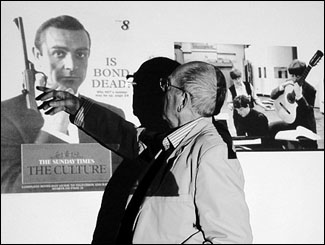 |
|
|
|
|
In addition to the United
Artists executives promoting the James Bond films, EON Productions
employed their own director of publicity, who was responsible for
additional marketing and tie-ins with companies and their products. Derek
Coyte (1929-2014) [pictured above in glasses to the right of Yaphet Kotto
in Live And Let Die (1973)] was involved throughout the 1970s,
although never formally credited on any of the films he worked on. Derek
Coyte had earlier been responsible for a very
clever item of
cross-promotion with Player's cigarettes in 1965. A two-sided
letter on thin blue water-marked airmail paper was folded inside the film
tie-in paperback 14th edition of THUNDERBALL from PAN Books. The letter
from Domino to James Bond refers to the sailor ‘hero’ on the front of
Player's Navy Cut cigarette packets. Coyte was also heavily involved
with Roger Moore's account of the filming of Live And Let Die,
first published in paperback by PAN Books in 1973. Although credited to
Roger Moore, the book was actually ghost-written by Derek Coyte from
Moore's audiotape dictation notes. |
|
|
|
A number of talented
photographers worked on the James Bond films from 1962, and are
responsible for the behind-the-scenes productions stills and promotional
images of the stars. In conjunction with the poster artwork, these iconic
images have become synonymous with the world of James Bond 007, and
present a unique insight into the way films are made and promoted. As was
the case with many other skilled artists associated with the James Bond
films, much of their work went uncredited at the time. Stills Photographers were not formally credited on the Bond films until
Moonraker (1979). The first three films in the series each had a
full-time stills photographer attached to the production who was on set
and location throughout the shoot, although other commercial freelance
photographers were hired to undertake special photo shoots for magazines.
These additional photographers were engaged because it was thought –
rightly or wrongly – that their work was superior to the production stillsman. It was not until For Your Eyes Only (1981) that the
series returned to employing photographers who were engaged for the entire
production – one for the main unit, and another to accompany the second
unit on location. This tradition continued until the Daniel Craig films,
which all had different stills photographers, in addition to those working
with other units during filming. |
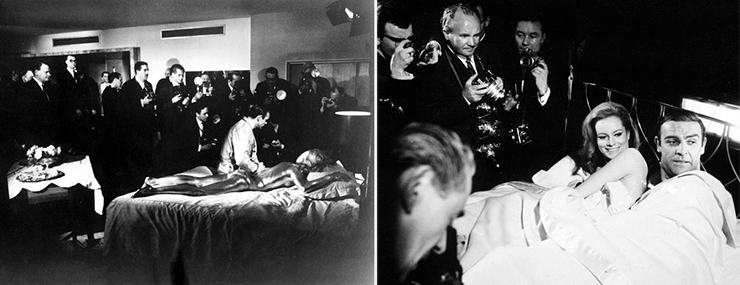 |
|
The American father and son team of Sam & Larry Shaw took many photographs
on the set of Casino Royale (1967), and their work was later
showcased in the February 1967 issue of
PLAYBOY, along with stills taken by renowned British photographer
Terry O'Neill. In addition to his work on the 1967 spoof James Bond film,
O'Neill also
photographed Sean Connery, George Lazenby and Roger Moore in the EON
Productions series. Terry O’Neill was also
chosen as the official photographer at the launch of James Bond #5, and his shot of a bearded Pierce Brosnan was the first image
released of the new 007 in 1994. O’Neill once more provided iconic images
of Pierce Brosnan, Izabella Scorupco and Famke Janssen in a series of
publicity stills used during the promotion of GoldenEye (1995). |
|
|
|
PROMOTIONAL PHOTOGRAPHERS |
|
|
Many high-profile
commercial photographers often shot special publicity stills to promote
the release of each new film, or tie-in with a particular product. In
addition to those present throughout entire the production to document the
day-to-day progress, an eclectic roster of well-respected international
photographers have visited the set during filming to capture the action,
or take specially posed stills of the stars. Their work then featured
in newspaper and magazine coverage of each release, with later films
afforded a ‘making of’ book showcasing the photographs of Greg Williams,
who joined the series in 2002. The 2020 book
The Goldfinger Files:
The Making of the Iconic Alpine Sequence in the James Bond Movie
“Goldfinger” by Steffen Appel & Peter Waelty is an excellent
account of the filming of the Swiss location scenes in Goldfinger
(1964) featuring stills by German photographer Erich Kocian and Swiss-born Josef Ritler
and Hans Gerber.
Kocian's work on many James Bond films was also collected in the German
language
book Die James Bond Filme first published by Heyne
Filmbibliothek in 1982, and re-issued
several times to include his work on later films in the series. |
|
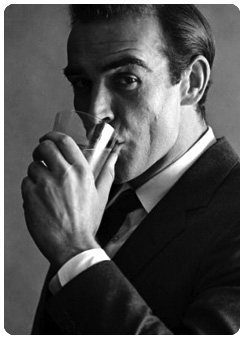 |
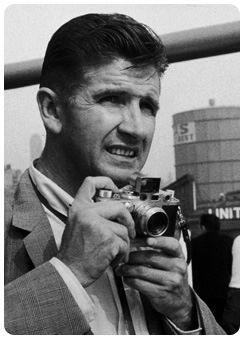 |
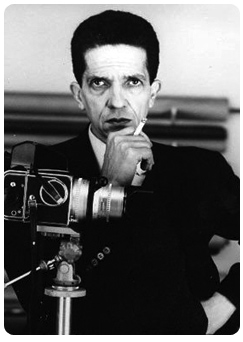 |
Terence Donovan (1936-1996)
Dr. No (1962)
Promotional
advertising shoot with
Sean Connery
for Smirnoff vodka.
Photographed at London's Dorchester Hotel,
the advertisement was published in the
November 1962 issue of
Town magazine.
[ROLLOVER] A still from the session |
Loomis Dean (1917-2005)
Photographer LIFE
magazine
From Russia With Love (1963)
Goldfinger (1964)
Thunderball (1965)
You Only Live Twice (1967)
On set and promotional photographs
On Her Majesty's Secret Service (1969)
Promotional photographs of the
screen testing for the new
James Bond in 1968
[ROLLOVER] Sean Connery photographed for
the cover of LIFE January 7, 1966 issue |
Pierluigi Praturlon (1924–1999)
From Russia With Love (1963)
Goldfinger (1964)
Thunderball (1965)
You Only Live Twice (1967)
On set and promotional photographs
[ROLLOVER] Sean Connery
|
|
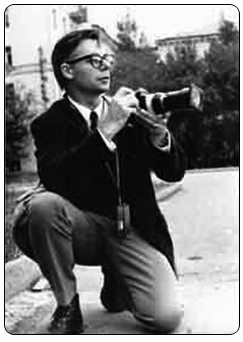 |
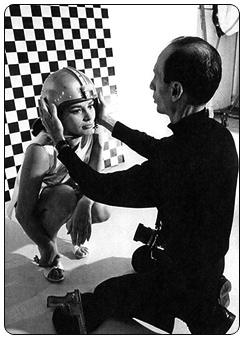 |
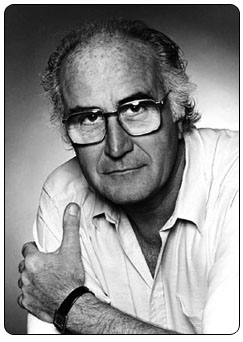 |
Phillip Harrington
(1920-2009)
Thunderball (1965)
Promotional photographs of the cast
on location in The Bahamas published in the
July 13, 1965
issue of LOOK magazine
[ROLLOVER] Unpublished photo of
Rik Van Nutter from the session |
Donald Smolen (1923-2003)
You Only Live Twice (1967)
Promotional photographs of Karin Dor
at Pinewood Studios [pictured above] |
David Steen (1936-2015)
Portraits of Ian Fleming,
David Niven,
Peter Sellers, Sean Connery, Roger Moore,
Jane Seymour,
Britt Ekland, Maud Adams
and
Pierce Brosnan.
[ROLLOVER] Ian Fleming photographed at his Mitre Court office in
London 1962 |
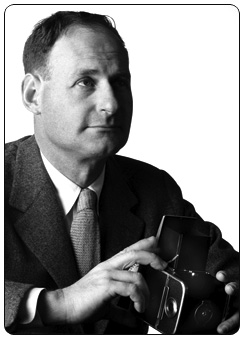 |
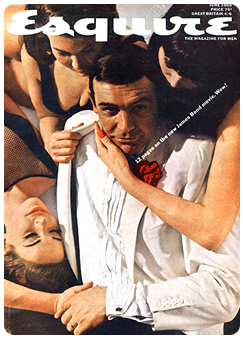 |
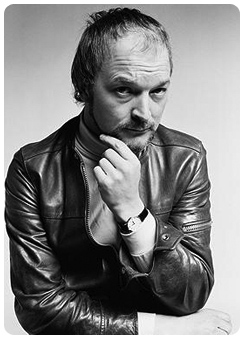 |
Robert Freson (1926- )
Thunderball (1965)
Photographs of Sean Connery, Claudine Auger, Mitsouko and
Luciana Paluzzi published in
Esquire
magazine June 1965
[ROLLOVER Sean Connery] |
Esquire magazine June 1965 and
[ROLLOVER] March 1967 covers
Designed by George Lois (1931-2002)
Photographed by
Timothy Galfas (1924-2013) |
Brian Duffy (1933-2010)
You Only Live Twice (1967)
Photographs of Karin Dor, Akiko Wakabayashi and Mie Hama published
in
Esquire magazine March 1967.
[ROLLOVER] Akiko Wakabayashi.
Also photographer for the cover of the 1963
PAN Books paperback of
THUNDERBALL designed by Raymond Hawkey |
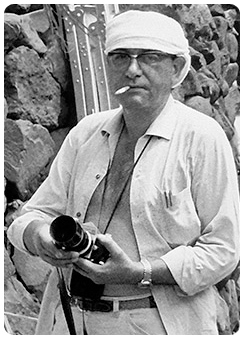 |
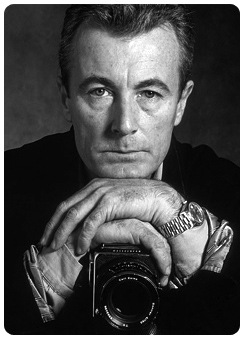 |
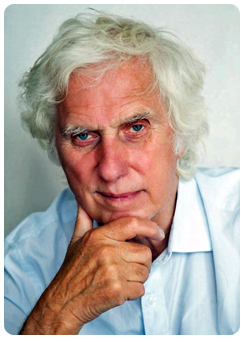 |
Erich Kocian
Goldfinger (1964)
Thunderball (1965)
You Only Live Twice (1967)
[pictured above on location in Japan]
Diamonds Are Forever (1971)
Live And Let Die (1973)
The Man With The Golden Gun
(1974)
Never Say Never Again (1983)
Licence To Kill (1989)
Tomorrow Never Dies (1997)
On set and promotional photographs
Die James Bond Filme (1998 edition)
[ROLLOVER] |
Terry
O'Neill (1938-2019)
From Russia With Love (1963)
Goldfinger (1964)
Casino Royale (1967)
On Her Majesty's Secret Service (1969)
Diamonds Are Forever (1971)
Live And Let Die (1973)
GoldenEye (1995)
On set and promotional photographs
[ROLLOVER] Sean Connery on location at the Elrod House in Palm
Springs, Nevada during the filming of Diamonds Are Forever. |
Douglas Kirkland (1934-2022)
Licence To Kill (1989)
Promotional photographs
[ROLLOVER] Promotional still of Talisa Soto, Timothy Dalton and Carey
Lowell. |
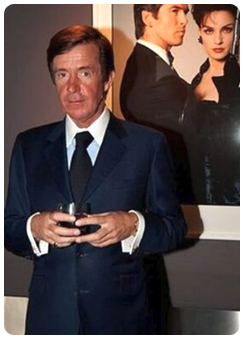 |
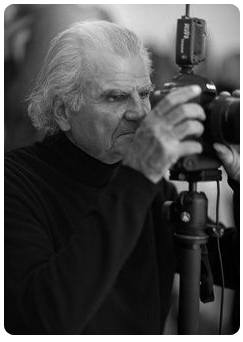 |
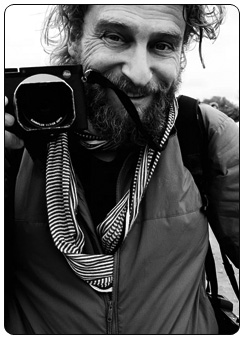 |
John Stoddart (1957- )
GoldenEye
(1995)
Promotional photographs
[ROLLOVER] Promotional still of
Famke Janssen, Izabella Scorupco
and
Pierce Brosnan |
Patrick Demarchelier (1943-2022)
Die Another Day (2002)
Promotional photographs of Pierce Brosnan and Halle Berry featured
on the US one-sheet,
and a series of character posters of Pierce Brosnan (Bond), Halle
Berry (Jinx), Toby Stephens (Graves), Will Yun Lee (Zao)
and Rosamund
Pike (Frost).
[ROLLOVER] Halle Berry and Pierce Brosnan
US Key Art Die Another
Day (2002) |
Greg Williams (1972- )
Die Another Day (2002)
Casino Royale (2006)
Quantum of Solace (2008)
Skyfall (2012)
Spectre (2015)
No Time To Die (2021)
On set and
promotional photographs
[ROLLOVER] Promotional still of
Daniel Craig Casino Royale (2006) |
|
|
OTHER
NOTABLE PHOTOGRAPHERS |
|
|
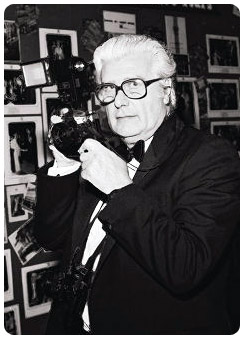 |
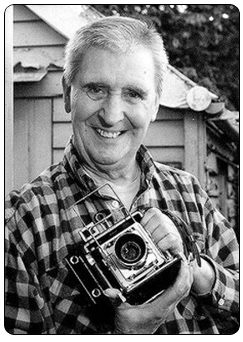 |
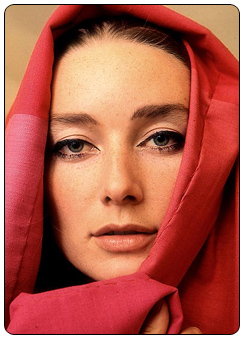 |
|
Henry George (known as Harry)
Myers (1928-2012) |
Horace Ward (1931-2019)
Fleet Street Photographer |
Tania Mallet (1941-2019)
Photographed by Horace Ward |
|
|
Photographer Harry Myers, founder of
PIC Photos Limited, was an
ever-present figure at London's West End film premieres, beginning
with the Royal Film Performance of A Matter of Life and Death
in 1946. He took photographs of the stars and invited guests at the
London premiere of every James Bond film from Dr. No (1962) to
Tomorrow Never Dies (1997).
In addition to
the stills photographers employed by the production, and those
engaged to take promotional stills for use in the marketing of
the James Bond films, hundreds of Fleet Street photographers
also visited the set to capture candid images of the stars for
use in newspaper and magazine coverage. One of the photographers
who specifically collaborated with EON Productions to take
photos of the ‘Bond Girls’ in the early 1960s was the late
Horace Ward, who worked for the London Evening Standard. Among those
photographed by Horace Ward were Zena Marshall [Miss Taro in
Dr. No (1962)]; Bettine Le Beau [Professor Dent's secretary
in Dr. No (1962)]; Malou Pantera [Hotel receptionist
(uncredited) in Dr. No (1962)]; Lisa Giraut [Gypsy Belly dancer
credited as ‘Leila’
in From Russia With Love (1963)]; Martine Beswicke [Zora
in From Russia With Love (1963) & Paula Catlin in
Thunderball (1965)], Aliza Gur [Vida in From Russia With
Love (1963)]; Nadja Regin [Kerim's Girl in From Russia
With Love (1963) & Bonita in Goldfinger (1964)];
Margaret Nolan [Dink in Goldfinger (1964) & ‘Golden Girl’ on the
film posters]; Tania Mallet [Tilly Masterson in Goldfinger
(1964)]; Anouska Hempel [Australian Girl in On Her Majesty's
Secret Service (1969)]. Horace Ward
also photographed Gert Frobe [Auric Goldfinger in Goldfinger
(1964)] on the set of Those Magnificent Men In Their Flying
Machines (1965); From Russia With Love vocalist Matt
Monro; ‘Goldfinger’ singer Shirley Bassey, and lyricist Anthony
Newley.
|
|
FILM
POSTER DESIGNERS & ARTISTS |
|
|
|
The advertising
campaigns for the first three James Bond films were overseen by
United Artists creative director David Chasman.
Dr. No (1962)
established the painted poster style featuring the iconic Bond,
Girls and Guns combination seen on the posters for most of the
series. However, for From Russia With Love and
Goldfinger, both released in the USA in 1964, creative
director David Chasman favoured a crisp
photographic
style poster for the American campaign. Chasman himself
devised the stylish two-colour posters for From Russia With
Love, whilst influential UK based graphic designer
Robert
Brownjohn (1925-1970) created the iconic ‘Golden Girl’ image and
tightly-cropped photo panels seen on the
UK and
US posters.
Brownjohn also designed the main titles for both films.
Donald Smolen joined United Artists
in 1965 as an art director, although he had earlier drawn pencil
sketches for From Russia With Love (1963) used
mainly in newspaper advertising. Working closely with poster
artists Robert McGinnis and Frank McCarthy, they created the
iconic three panel artwork utilised in the American campaign for
Thunderball
(1965). Smolen then oversaw the marketing and advertising of the
next four James Bond films, once again featuring the superb
artwork of McGinnis and McCarthy. Smolen was also responsible for
the lengthening of the Sean Connery figure in the artwork Robert
McGinnis supplied for
Diamonds Are
Forever (1971), when it was felt that James Bond should be
positioned higher than the two girls either side of him.
Donald Smolen left United Artists in June 1974 to set up his own agency.
Smolen, Smith and Connelly continued to consult on the James
Bond series and also devised the marketing campaigns for such high
profile films as The Omen (1976), Star Wars (1977)
and
Apocalypse Now (1980). American artist
Tom Jung was approached by Don Smolen to paint the artwork for the
alternate ‘Villains’
Style B 1-Sheet
poster used exclusively in the US advertising campaign for
The Man With The Golden Gun (1974). The
Western
Hemisphere posters utilised the Robert McGinnis artwork [with
the addition of four coloured karate figures added by Basil Gogos (1929-2017)]. Tom
Jung would later produce many concept sketches for Licence To
Kill (1989) whilst Smolen was still attached to the project
then called ‘Licence Revoked’. Don Smolen was also the advertising
campaign director on
The Spy Who
Loved Me (1977) and hired Robert Peak to paint the
colourful poster art in his unique style. The US posters for
For Your Eyes
Only (1981) returned to the photographic style favoured by
David Chasman and were designed by influential graphic designer
William Gold (1921-2018), who came up with the controversial image
of James Bond seen through the legs of a crossbow wielding girl.
Bill Gold's idea was incorporated into Brian Bysouth's artwork
seen on posters throughout the rest of the world.
In Summer 1988
James Bond producer Albert R. Broccoli hired Don Smolen to create
a Christmas and Easter teaser campaign for the 16th James Bond
film then titled ‘License Revoked’. Smolen hired Robert Peak to
paint a series of stylish concept posters reflecting the tougher gritty style of the new
film. With the takeover of United Artists by MGM in 1989, Smolen's
campaign was rejected [and also later artwork from American designer
Steven Chorney (1951- )] and new posters created for the film now re-titled
Licence To Kill, using a photo-montage technique then
adopted for the rest of the series. Bob Peak's series of highly
stylized portraits of Timothy Dalton remain as a tantalising ‘what
if..?’ from the end of the golden era of film promotion. |
|
|
|
|
|
NOTABLE INTERNATIONAL FILM POSTER ARTISTS |
|
|
Throughout the 1960s it
was common for international posters to feature different artwork to that
seen in the UK and US advertising campaigns. Usually painted by a renowned
poster artist from the country of origin, these designs often featured an
alternate take on the original English language versions, with others
offering a completely different style of artwork. Some artists worked on
more than one title during the 1960s, with others employed just for one
film. This was the case with Spanish poster designer and illustrator
Francisco Fernández-Zarza Pérez, known as “Jano”. For the Spanish 70mm engagements
of Casino Royale (1967), a special alternate poster was designed
which featured the familiar Robert McGinnis ‘Tattooed Girl’ artwork, but
with additional illustrations of the female leads by “Jano” at the top. From the
1970s poster artwork was generally the same in all territories with titles
and credits translated as required. Japanese posters for the James Bond
films of the 1960s featured garish photo-montages and elements of artwork,
but later releases also had an alternate style which utilised the familiar
key artwork seen elsewhere. For Your Eyes Only (1981) is
unique in that it also had a poster painted by Hisamitsu Noguchi,
featuring Roger Moore in the familiar Robert McGinnis pose with the
addition of girls and action elements similar to those seen on the
UK poster designed by Eric Pulford
and painted by Brian Bysouth. |
|
|
|
|
|
